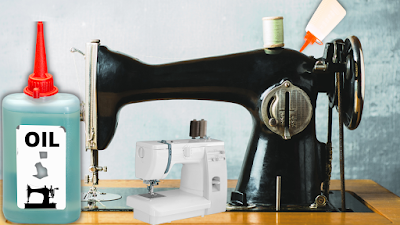18 Sewing Tips for Beginners to Learn Sewing Fast and Easy
My 18 Sewing Tips for Beginners start with #1 step, that is your willingness to learn sewing. You deserve congratulations on your zeal to learn and unlearn many things you would have been knowing till now.
So, let's start with what I have tried my own self and wish to share with you with love for sewing -
#1. Be Willing to Try
As everybody says, "Well begun is half done." Your willingness to learn, experiment, try, test, fail and create is one of the most important tips, you need to follow.
You live in best learning times when you have plenty of options like -
- Visit your local library and check out some books on sewing for beginners, or maybe you can check some online sewing books.
- Join any Sewing Community which helps you and supports you.
- Find sewing patterns and do it yourself (DIY) video tutorials on YouTube in English or your native language. You can watch DIY sewing in Hindi / Urdu here.
#2. Start with Easy Sewing Patterns
Start with simple things like making a handkerchief to master sewing machine speed and get a grip on your sewing.
Learn the fundamental hand stitches. These will we use in your sewing endeavors.
Simple sewing would also help you master straight stitches, back stitches and getting little curvier. As you are able to make accurate straight stitches, you would be able to sew neat and beautiful dresses.
#3. Start with Manageable Fabric
The best fabric on Earth that I love to sew is Cotton, and I advise the same to you. No wonder, cotton wins your heart because it is natural fiber and comfortable for wear.
Most importantly, it is so much easier to handle cotton while sewing. No hassles with cotton.
Therefore, you need to be sure that you use fabric that is easy to work with for your initial sewing projects.
You must avoid stretchy fabrics or lace, or large plaid and stripe patterns until you got some experience.
#4.Shrink Proof Your Fabric
Cotton and cotton blended fabrics tend to shrink. Other fabrics (except synthetics) also shrink. So, you mush ensure that you prewash all washable fabrics before cutting.
This way you can ensure that your dress is not 2 inches shorter than what you had measured and cut. Shrinking the fabric saves you headaches and heartache later.
#5.Keep Iron by Your Side and Use it
Iron must be your best friend at every stage of sewing. You must iron fabric pieces before starting, and press each seam open as you go.
On top of that, you must know the difference between when you need ironing and when to press while sewing.
#6. Understand the Basics of Sewing Before Experimenting
Until you understand the basics of sewing, don't try to take shortcuts, or skimp on fabric, or add stones, unusual trimmings, etc. (this is not a complete BAN but you may need some help with the applications here).
Once you have successfully finished a few projects, you can go ahead with the experimentations.
#7. Read the Sewing Instructions Carefully
If you are using a readymade sewing pattern, read the pattern and layout instructions carefully before beginning.
If you are following a YouTube Do It Yourself (DIY) Video Tutorial, then understand the instructions. If in doubt, ASK!
If you need to adjust a pattern there are tutorials online and in books, which you can check before making changes in your pattern.
There's no use in completing an item of clothing, only to have it not fit.
#8. Make Sure You are Sewing Right Pieces Together
To avoid ripping seams, make sure that you:-
- Mark the wrong side of the fabric.
- Make the notches/cuts, wherever mentioned. Always pay attention to the notches and marks on sewing patterns. Learning how to do a tailor's tack will help you keep track of these.
- Mark each part of the dress with chalk or marking pen.
- Use pins or basting stitch to place pieces before beginning with stitch. Use plenty of pins to make sure the seams are well lined up.
- Sew very slowly, taking out the pins before you see over them. And follow the directions on how to iron the seams.
#10. Ripping Seams is Essential Part of Learning Sewing
No matter how hard you try, you may end up joining the wrong sides or wrong pieces.
Relax, it happens with everybody. I admit that it takes a lot more time to rip out a seam than to do it correctly in the first place.
Be prepared with a seam ripper and a small pair of scissors with sharp points next to you while you sew.
#11. Be a Friend to Your Sewing Machine
You should get familiar with your sewing machine. Know its internal and external mechanism (not technical knowhow necessarily).
Learn to thread it properly and which way the bottom bobbin goes in; if it is jammed, be careful and gentle no matter how irritated you are, get it free, and consider oiling it.
After oiling, always do some scrap pieces sewing just to make sure the thread isn’t covered with oil, as the first few stitches are always black and sticky.
#12. Have Fun Sewing
Have fun while sewing. If you get irritated, you must be facing some trouble which you are not able to identify with.
If you’re confused ask or google it. You’re learning, so nothing has to be perfect. If you’re still unsure, make pencil cases, little simple toys, a simple fabric folder or bookbag. Don’t rush yourself.
#13. Try First Stitch on a Scrap Fabric
You should check that your sewing machine is working properly on a piece of scrap fabric, before sewing on your actual clothing.
#14. Make Best Use of Do It Yourself Sewing Video Tutorials
YouTube is your best friend when it comes to sewing. Especially if you're using modern patterns, there are tons of step by step tutorials.
While, you have thousands of channels to choose from, keep in mind your best way of learning from YouTube.
#15. Keep Your Tools Ready
Make sure you have your tools and material ready, before sitting to sew.
An iron, ironing board, shears (only use these on fabric!), thread, spare machine needles, needles, straight pins, buttons, scrap fabric, and a container to store everything in.
The Sewing Tools list is small but it is important.
#16. Invest in a Basic Sewing Machine
While you could hand sew an entire piece, you will benefit tremendously if you have a sewing machine.
It doesn't have to be anything too fancy, and the simpler the better.
#17. Keep Updated with Latest Trendy Designs
I love Pinterest for the latest designs! Should be enough said, but…If it's fun it will be on Pinterest.
#18. Don’t Be Afraid to Make Mistakes.
If you want to know how something was put together, buy one at the thrift store and take it apart.
Don’t be overwhelmed by the lingo and people who use it.
Google is your friend and you can look up words you aren't familiar with.
Find people who are interested in your success in learning not who want to bury you with information about things you don’t have and probably don’t need yet.
Start off slow with a basic straight stitch and learn how to use your machine. If you’ve never made a buttonhole.. start on a scrap of fabric, not on the garment you’ve just invested 6 hours in.
Also.. have fun! Make stuff you like!
If it’s not perfect that is still Okay and your item can still be very cool and useful! Sewing is a skill, everyone should learn to stop being dependent on others.
And most importantly, sewing will help you NOT to look like a clone to your neighbor, who bought the same dresses from the same store!
To know more, please visit https://stitchingmall.com


Comments
Post a Comment